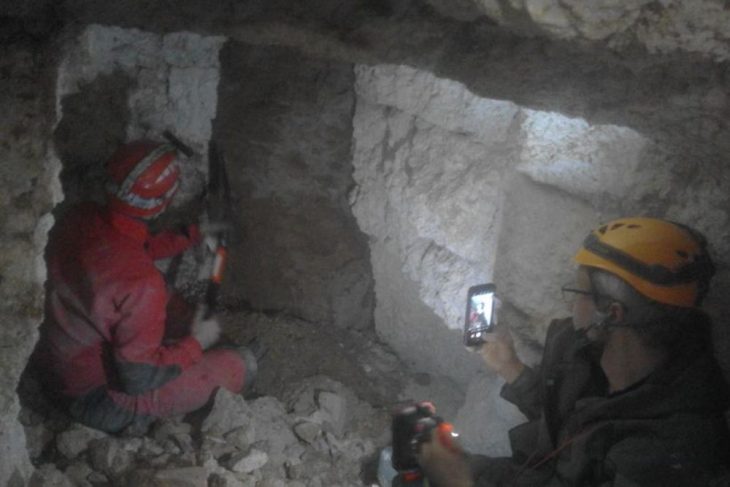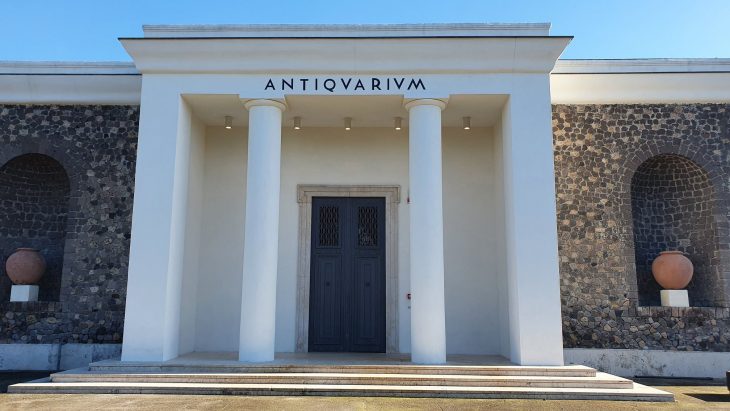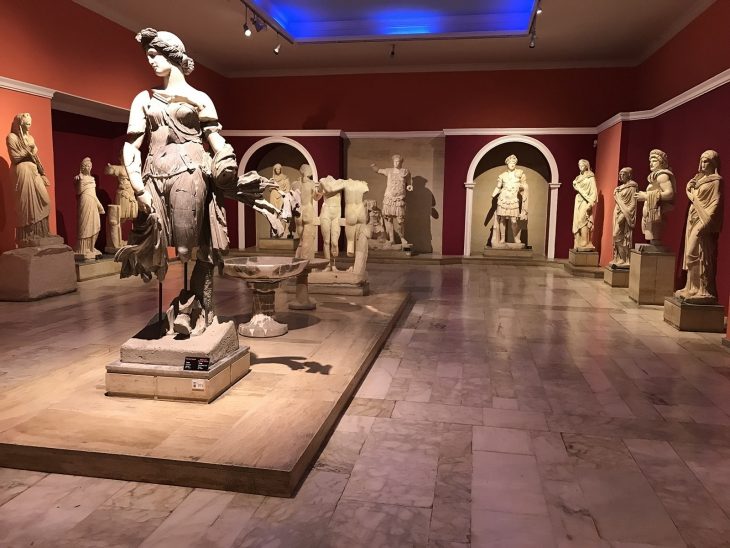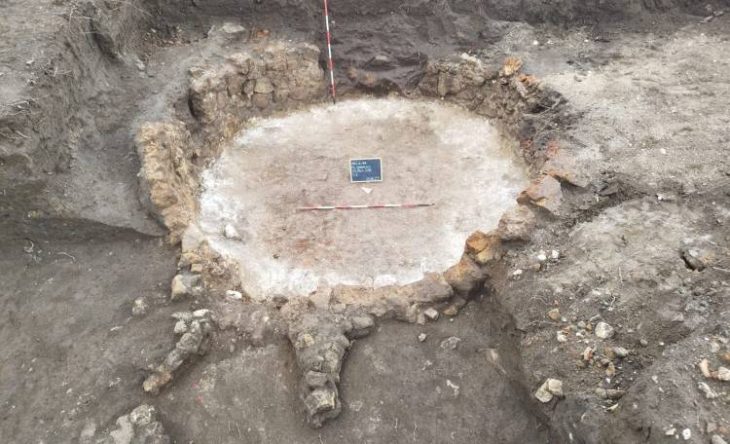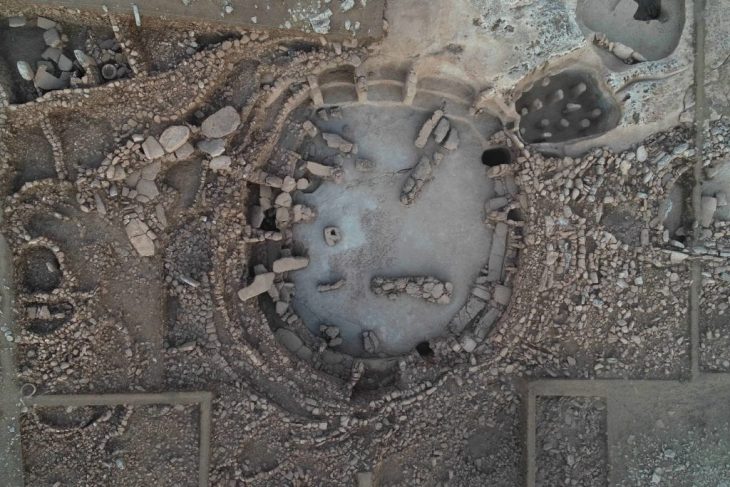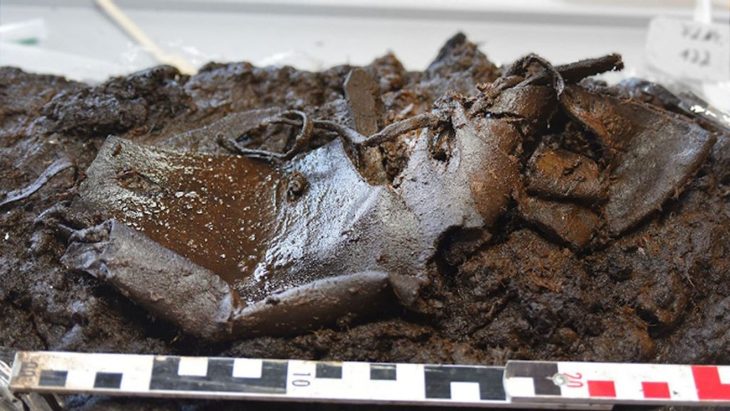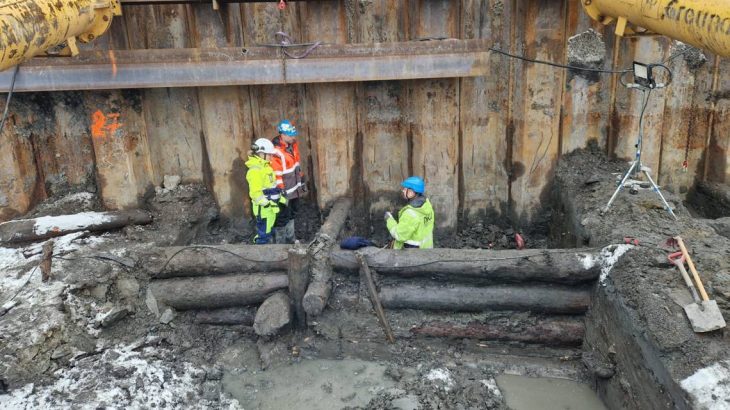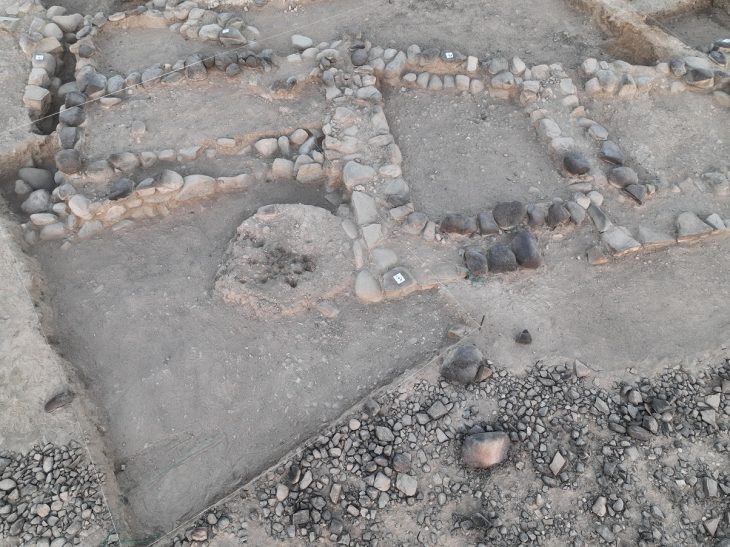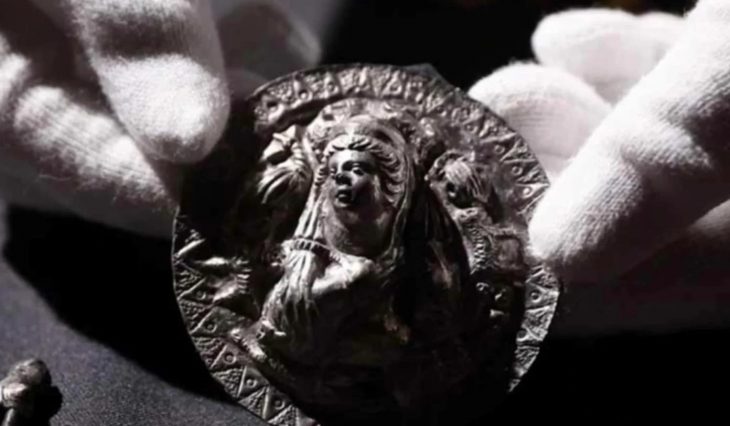At Saraçhane Archaeology Park, where the Church of St. Polyeuctus is situated, excavation work by Istanbul Metropolitan Municipality (IBB) teams found a statue that is thought to date back to the Roman era.
There are modest ruins of a structure that was once the largest church in Constantinople and was constructed to resemble the Solomon Temple in Jerusalem in a small park right in the middle of Istanbul’s Fatih neighborhood, close to the location of the Istanbul Metropolitan Municipality.
Before the erection of the new Hagia Sophia by Emperor Justinian in 537, the Church of Saint Polyeuctus was the largest temple in Constantinople.
Although only ruins remain from the church, it is very important in terms of shedding light on an important period in Byzantine history. The church was built by Anicia Juliana, daughter of Olybrius, a former Western Roman emperor. The church, which was the most magnificent structure of Constantinople in the years it was built, was dedicated to a Christian martyr named Saint Polyeuctus.
The Church of St. Polyeuctus, built in A.D. 524 was destroyed after being used for various purposes. However, after some historical artifacts belonging to the church were discovered during the construction of an underpass in the 1960s, excavation works were carried out in the church.
📣 Our WhatsApp channel is now LIVE! Stay up-to-date with the latest news and updates, just click here to follow us on WhatsApp and never miss a thing!!

Following a six-year hiatus, excavation work was resumed by IBB Heritage teams affiliated with the Cultural Affairs Directorate. A statue was discovered approximately 1 meter (3 feet) deep in the fill on the north side of the main structure where excavation work was being done. The marble statue’s head, legs, and right arm were found to be broken at shoulder height. The figure, dressed in a himation that exposes the upper right side of its body, is thought to date from the Roman period. The exact age and period of the statue will be determined after further examination.
At the excavation site, Mahir Polat, the deputy secretary general of the IBB, said: “The Polyeuktos Church’s ruins will be exactly 1,500 years old soon. Yet, there were also buildings in the Roman period before the Polyeuktos Church was built on this site. After it was destroyed, there were also different buildings in the Ottoman period. This is a truly unique point for Istanbul’s urban archaeology.”
“We are in a collection of buildings that are almost a summary of Istanbul, which was the capital of three empires. Since June 2022, we have started intensive excavation work and re-planning of the site. This building complex represents a unique momentum in Byzantine history and subsequent periods of the world’s architectural history. It was built just before the Hagia Sophia as the most magnificent example of the ‘domed basilica’ architectural style. We think that Hagia Sophia was built to be pit against the church,” he said.

Adding that the artifact may have been dedicated to Asclepieion, the god of medicine in ancient Greece, he said: “Along with a Byzantine archaeological excavation in the field, there is actually data from pre-Byzantine Roman archaeology. Part of it had been excavated for many years, but we, as the IBB, included the northern part that was not excavated at the time,” he said.
About the statue, Polat emphasized: “With our studies, we think that this finding, a Roman-period statue, dates back to the A.D. second century. With these studies, we hope to find the lost head or other parts of the body.”
Polat also stated that the artifacts found during the excavation would be exhibited soon.


